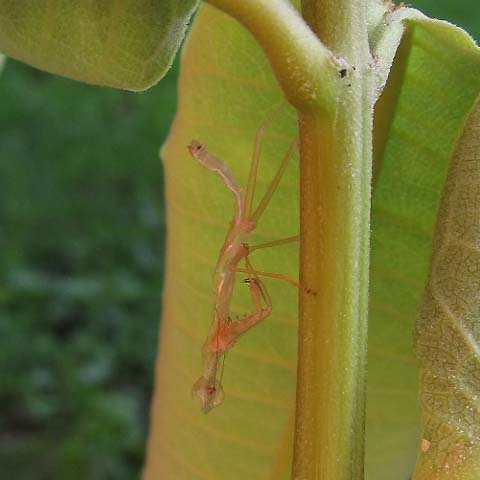My oldest son, Keith, called me last night with the best of news —
Keith found these 8 shark teeth in the Niobrara chalk of western Kansas. (The picture shows different angles of each tooth.)

Michael Siberson, a palentologist from Sweden, identified the eight teeth as a new species and named it Cretalamna ewelli after Keith.

The Niobrara chalk formed from an inland sea that divided North America during the age of dinosaurs. This picture shows Keith in the chalk when my husband and I were there in the fall of 2003. Keith was stationed at Fort Riley for 2 years. He fossil hunted extensively those 2 years and another year after he got out of the Army. (Obviously, he’s fossil hunted since he was young.)
Among his finds were 3 turtles, which are rare. One was the size of a box turtle. He found the oldest true-flight bird of North America — 120 million years old. It was the size of a snipe and still had teeth. Birds evolved from lizards — why the teeth. Earlier birds were gliders and had to run to take flight.
He also found an inch-long armored skull that no one has any idea what it could be. Michael Siberson also has teeth from another shark Keith found that still hasn’t been identified or named.
Keith has donated fossils to the Sternberg Museum of Natural History in Riley, Kansas; to the American Museum of Natural History in Chicago, the Denver Museum of Natural History and the Smithsonsian in Washington D.C.
Mike Everhart, Keith’s mentor, has published a book, Oceans of Kansas, A Natural History of the Western Interior Sea. He also has an extensive website — http://oceansofkansas.com/
Mike has a lengthy page of Keith’s fossils on his website at http://oceansofkansas.com/Paleozoic.html You’ll quickly see that not all shark teeth look like the “typical” shark tooth. Also take note of the second tooth from the bottom on the right — it’s a pedalotus I found. Mike said it was the biggest he’d seen.
Having a shark named after Keith has reignited his passion for fossil hunting — he’s leaving in a month or so for fossil hunting in Kansas.
P.S. I just found the mystery skull Keith found. Here’s the link. http://oceansofkansas.com/Temp4.html










































